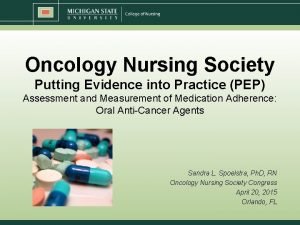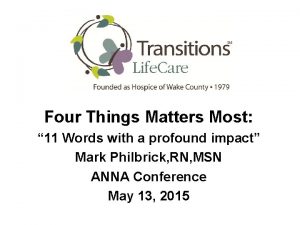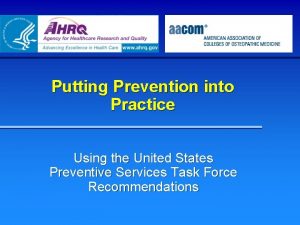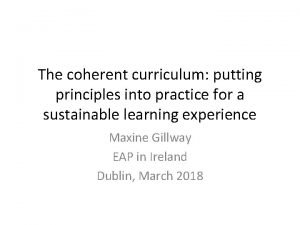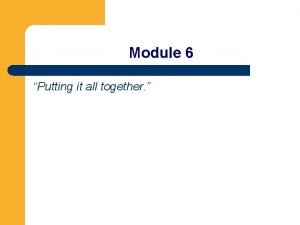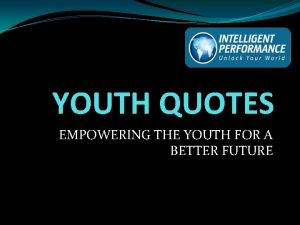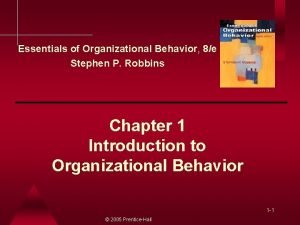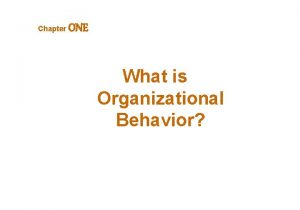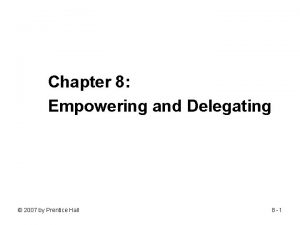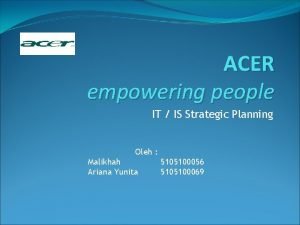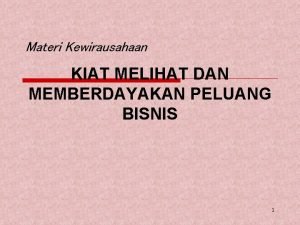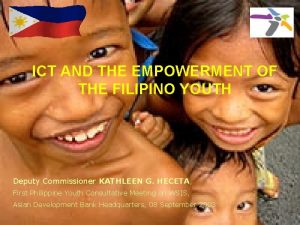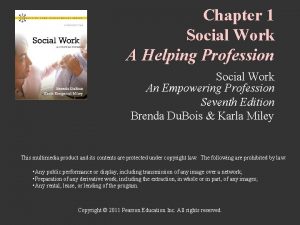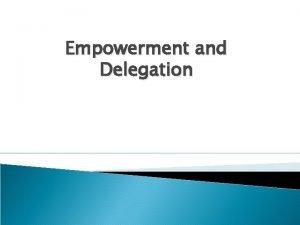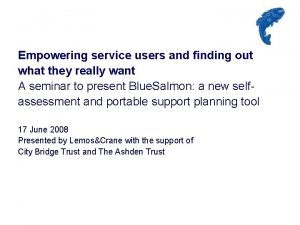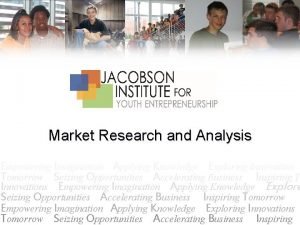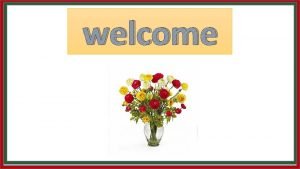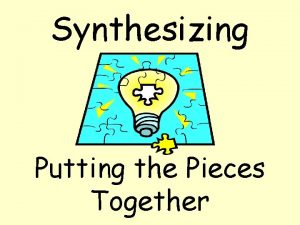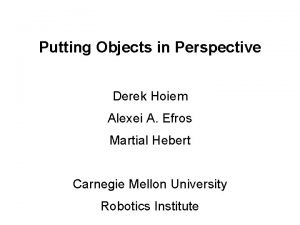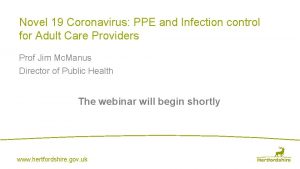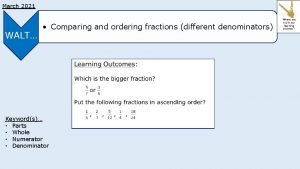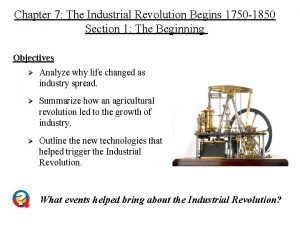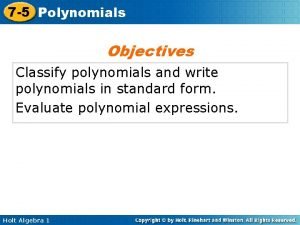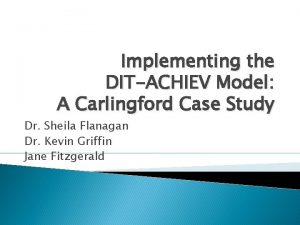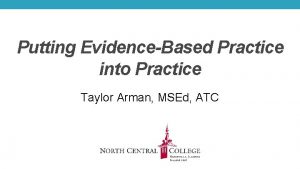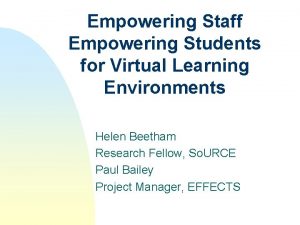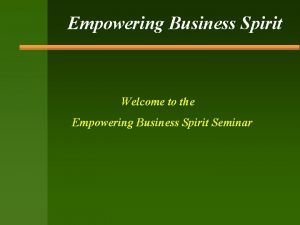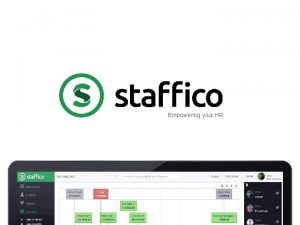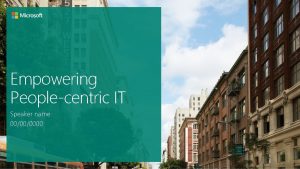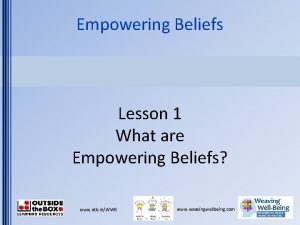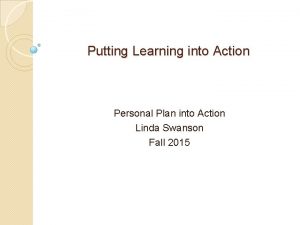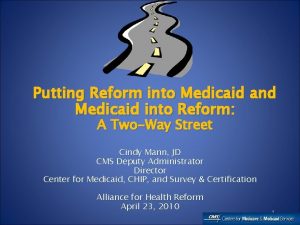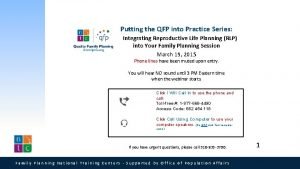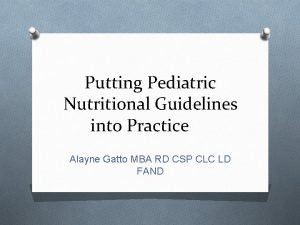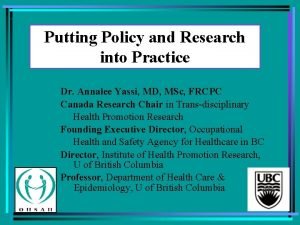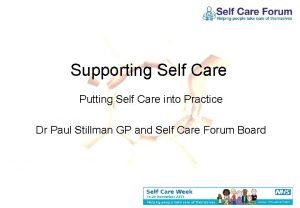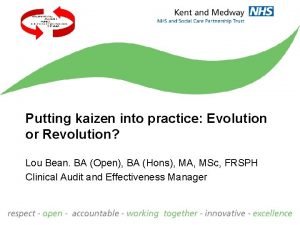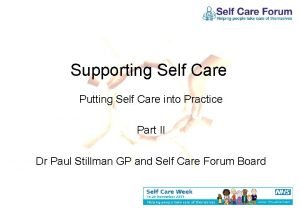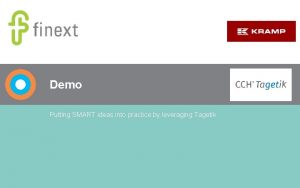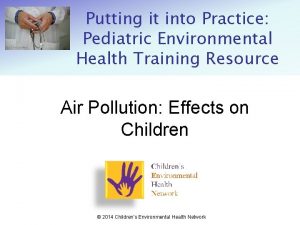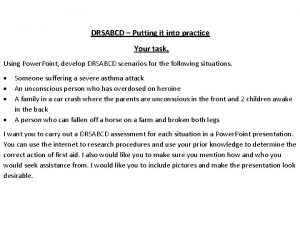Putting the DITACHIEV Model into Practice Empowering the



































- Slides: 35

Putting the DIT-ACHIEV Model into Practice “Empowering the Tourism Industry” Dr. Kevin Griffin Dublin Institute of Technology Dublin Tourism Dublin City Council Temple Bar Traders Tourism Ireland Dublin Institute of Technology IBM Temple Bar Cultural Trust Irish Research Council for Humanities & Social Sciences

Making Killarney’s Tourism More Sustainable

Making Tourism in Carlingford and Cooley More Sustainable

How to Conceptualise Sustainability


OR

Dimensions of Sustainability Theme / Issue Indicative subject Material Triple Bottom Line Combined economic / environmental / socio-cultural impacts sustainability Environmental Sustainability Physical integrity (biodiversity / condition of wildlife) // Environmental Purity (water / air quality) // Status of protected habitats / protected buildings // Noise / visual impacts / landscapes // Global warming / CO 2 footprint Socio-Cultural Sustainability Local folklore and historic sites local customs/communities Economic Sustainability Economic impact // Economic competitiveness / viability (leakages / sustainability) // Cost of living // Appropriate level of investment // Tourist spend // Quality / vibrancy of employment Resource Management Issues Carrying capacity / controlling intensity of usage // Resource (water) availability / supply / treatment // Landuse // Transport management / access transport / road congestion & pressure/transport policies // Efficiency of resource usage (water / energy / waste / recycling) // Management of ancillary visitor amenities and services // Maintenance of local distinctiveness / variety of experience Sustainable Practices Environmental management policies and use of best practices at tourism businesses // Adoption of sustainable practices // Sustainability awards and schemes // Eco-labelling Social Responsibility Social equity (gender equity) // Disability access // Workers rights/immigration // Sex Tourism / exploitation of young people Community/Resident Impacts Local prosperity // Population trends // Community / resident attitudes / satisfaction // Local Access to/use of assets // Community benefits / wellbeing Tourism Businesses/ Destination Tourism partnerships – networks, marketing, cooperation // Appropriate scale of enterprise // Maintaining image / identity // Participation of business in service quality / excellence schemes Visitor Characteristics and Perceptions Visitor profile / visitor payback // Visitor satisfaction / fulfilment // Tourist motivation to visit // Tourist expectation re-crowding // Level of repeat business // Tourist perception of local management // Tourist perception of local population // Tourist satisfaction with transport Sustainable Management Community involvement / awareness / control // Integrating tourism into local / regional planning // Assessment of administrative goals // Performance measurement // Clear and capable management of tourism / tourists // Monitoring and maintenance of regulations / performance / policies // Legislation Health & Safety Health // Diseases / epidemics etc // Tourist security // Local / public safety // // Philosophical analysis / examination of Importance and state of local culture (richness) // Tourism impact on

Evolution of DIT-ACHIEV Model For Sustainable Destination Management

Original ‘Indicator’ Project Sustainable Tourism Development: Toward the Mitigation of Tourism Destination Impacts 2004 -2007 Challenge: ‘The development of an environmentally integrated tourism destination management model’ Funding: Irish Environmental Protection Agency under national scheme

Three Strand Approach (evolved from Carrying Capacity model) § Strand 1: Quantifiable Dimensions § Strand 2: Qualitative Perspectives § Strand 3: Integration and refinement of data

Key Fields of Interest (6) H C DIT-ACHIEV Model V I E A

Air Quality Participation in energy saving / use of renewable fuels // Overall air quality data for the study area // Specific Pollution / Emissions i. e. CO 2 - airlines / accommodation – important Archaeolog y and History Local folklore Local monuments & places of interests // Local History // Record of History and Archaeology Culture Local (Irish) language // Local festivals // Local culture // Local customs Local sports // Local placename Flora & Fauna Annual counts for wetland bird species (IWe. Bs Summary Data 1999 -2004) // Electrofishing (fish count) data for key rivers (2004) // Counts for summer bird species // Lakeshore habitat survey // Census of returning adult salmon to the Shannon Fishery (1960 -2000) // Qualitative descriptions of protected habitats and record of significant flora and fauna species. // Number, extent and status of protected habitats in the study area. // Fisheries status of key rivers in study area. // Length of damaged or degraded lake shoreline habitat // Number of endangered species occurring in study area // Counts for sensitive mammal and flora species Landscape Status and existence of protected habitats // Photographic record of key landscapes and protected views // General, qualitative appraisal of landscape character in the study area // List of protected views // Climate Change – global issue, but local initiatives / actions could be important Noise Environme nt Assessment of ambient noise environment and noise pollution // Assessment of visitor / resident / agency perception of noise pollution Water Quality Trophic Status of Lough Derg (1998 - 2005) // Biological pollution status (Quality Rating) of key rivers in the study area (1971) // Physical and chemical water quality parameters of lakes and rivers in the study area (2001) // Hydrocarbon contamination from pleasure boats // Number of recorded algal blooms // Groundwater quality parameters at official monitoring boreholes in the study area (2001) // Lake Shoreline Inspection Record (litter, appearance of water quality etc) Heritage // n i s tor a c i nd I 1 21 l a t o T

DIT-ACHIEV Model of Sustainable Tourism Management

Assessable Parameters

This led to: Putting the DIT-ACHIEV Model into Practice 2009 -2011 Funding: Co-funded by the Environmental Protection Agency and Fáilte Ireland

Goals the DIT-ACHIEV Model of Sustainable Tourism Indicators using Denman’s methodology. q Testing model in real situations. q Establishing model as national benchmark tool for the management of tourism in a sustainable manner. q Develop toolkit for use of model. q Operationalise

Overall process Data Collection Data Analysis Identification of Issues Planning for the Future

Denman’s Methodology for the Formulation of a Sustainable Tourism Strategy Create a multi-interest working group 2. Agree on initial issues to investigate 3. Undertake wide consultation 4. Prepare a situation analysis, including destination performance, needs and opportunities 5. Consult and agree on key issues and priorities 6. Determine strategic objectives 7. Develop an action programme 8. Establish or strengthen instruments to facilitate implementation 9. Implement actions 10. Monitor results 1.

Site Selection In Phase 2 (Carlingford / Killarney) sites were selected following a competitive tender process. Criteria for selection were based on the study area e. g. definitive area, and current tourism management systems e. g. team of key stakeholders in place. Two destinations selected to pilot model: Carlingford and Cooley Peninsula Killarney Town and Valley

Now Entering Phase 3 Testing and running the model in an Urban setting. Temple Bar – the ideal location


Responsibilities Task Group Members Project Steering Project Management Academic Quality International Local Liaison Best Practice & Research Steering Committee School of Hosp. Mgmt. & Tourism, DIT International Team Temple Bar Panel DIT & Local Committee Project Co-ordinator S. Flanagan K. Griffin (Others as required) R. Butler J. Swarbrooke F. Dimanche R. Hawkins L. Mc. Morrow Temple Bar Steering Committee

The Model in Action

DIT-ACHIEV Model of Sustainable Tourism Management








What are the Key Issues

DIT-ACHIEV Model of Sustainable Tourism Management

Key Challenges / Issues / Problems Brainstorming on ◦ ◦ ◦ Heritage Issues Infrastructure Issues Enterprise Issues Community Issues Visitor Issues Administration Issues

Putting the DIT-ACHIEV Model into Practice “Empowering the Tourism Industry” . u o y k n Tha ? s n o i t s e u Q Dublin Tourism Dublin City Council Temple Bar Traders Tourism Ireland Dublin Institute of Technology IBM Temple Bar Cultural Trust Irish Research Council for Humanities & Social Sciences
 Physical and non-physical rate fences
Physical and non-physical rate fences Putting evidence into practice
Putting evidence into practice Putting it into practice
Putting it into practice Putting prevention into practice
Putting prevention into practice Coherent curriculum
Coherent curriculum Putting the enterprise into the enterprise system
Putting the enterprise into the enterprise system Putting the enterprise into the enterprise system
Putting the enterprise into the enterprise system Practice putting it all together
Practice putting it all together Quotes about empowering youth
Quotes about empowering youth Empowering people in ob
Empowering people in ob Empowering people in ob
Empowering people in ob Basic ob model stage 2
Basic ob model stage 2 Empowering and delegating
Empowering and delegating Acer empowering people
Acer empowering people Empowering minds curriculum
Empowering minds curriculum Empowering business
Empowering business Empowering imagination
Empowering imagination Youth empowerment in the philippines
Youth empowerment in the philippines Social change in social work
Social change in social work Empowering and delegating
Empowering and delegating Empowering service users
Empowering service users Writers notebook examples
Writers notebook examples Monetizing energy data
Monetizing energy data Empowering imagination
Empowering imagination Putting-out system
Putting-out system What is nasreen putting chocolate on?
What is nasreen putting chocolate on? Long term impacts of the industrial revolution
Long term impacts of the industrial revolution Proletarianization ap euro
Proletarianization ap euro Puts the pieces together if in use maybe
Puts the pieces together if in use maybe Putting objects in perspective
Putting objects in perspective The order of putting on ppe
The order of putting on ppe Putting it all together motion answer key
Putting it all together motion answer key Ordering fractions
Ordering fractions Putting people first 2007
Putting people first 2007 Putting-out system
Putting-out system Classification of polynomials
Classification of polynomials

